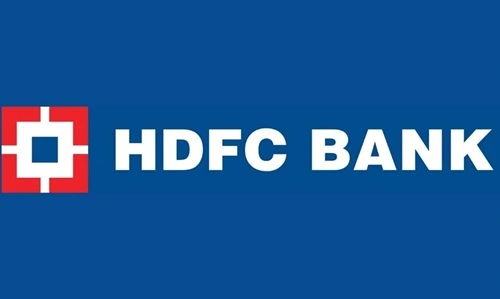HDFC Bank, one of India’s premier private sector banks, has consistently outperformed its peers in the Indian banking industry. With a strong focus on digital innovation, customer-centric services, and risk management, HDFC Bank has built a robust reputation and solid market position since its founding in 1994. As of today, HDFC Bank is renowned for its expansive product portfolio that spans retail banking, wholesale banking, and treasury operations. However, in a rapidly evolving financial landscape marked by regulatory changes, digital disruption, and increasing competition, HDFC Bank faces both significant challenges and opportunities. Here is an in-depth SWOT analysis of HDFC Bank, along with insights into its future outlook.

Strengths
1. Strong Brand Equity and Market Leadership: HDFC Bank is one of the most trusted and widely recognized banking brands in India, with a reputation for reliability and customer service excellence. The bank’s commitment to transparency, operational efficiency, and financial stability has made it a preferred choice for individuals and businesses alike. HDFC Bank’s strong brand equity helps attract a large and loyal customer base, enhancing its market leadership in the competitive Indian banking sector.
2. Extensive Branch Network and Digital Presence: HDFC Bank has an extensive distribution network with over 6,000 branches and 18,000 ATMs across India, making it accessible to customers in both urban and rural areas. Additionally, HDFC Bank has been at the forefront of digital innovation, offering a wide range of digital banking solutions. Its mobile and internet banking platforms have made banking more convenient, and this strong digital presence has enabled HDFC Bank to reach tech-savvy consumers and keep up with changing customer expectations.
3. Diverse Product Portfolio: HDFC Bank offers a comprehensive range of financial products and services, including savings accounts, credit cards, personal loans, home loans, auto loans, corporate banking, and wealth management services. This diversified portfolio allows the bank to cater to multiple customer segments, from retail to corporate clients, reducing dependency on any single segment. The breadth of offerings also allows HDFC Bank to cross-sell products effectively, thereby increasing customer lifetime value.
4. Strong Financial Performance and Robust Asset Quality: HDFC Bank is known for its strong financials, characterized by consistent growth in revenue, profitability, and a low non-performing asset (NPA) ratio. The bank’s prudent risk management policies and focus on high-quality lending have helped it maintain one of the lowest NPA ratios in the industry, safeguarding it from asset quality issues that have plagued other Indian banks. This robust asset quality strengthens investor confidence and enables HDFC Bank to maintain stable growth even in challenging economic conditions.
5. Focus on Technology and Innovation: HDFC Bank has consistently invested in technology to drive innovation and improve customer experiences. The bank’s “Digital 2.0” strategy aims to deliver personalized and frictionless banking experiences, leveraging artificial intelligence, data analytics, and mobile technology. HDFC Bank’s focus on technology has made it a leader in digital banking services in India, and it continues to innovate to meet the evolving demands of its customers, including digital payment solutions and fintech partnerships.
Weaknesses
1. Heavy Dependence on Retail Loans: A significant portion of HDFC Bank’s lending portfolio is concentrated in the retail segment, which includes home loans, personal loans, and credit cards. While this has been a profitable segment, it also makes the bank vulnerable to economic downturns, as a large number of retail borrowers may face repayment challenges in challenging economic conditions. Additionally, this dependence limits HDFC Bank’s ability to capture potential growth in other segments, such as corporate banking.
2. High Cost of Operations: Due to its extensive branch network and workforce, HDFC Bank has a high operating cost structure. Managing these costs, especially as digital banking services grow, is crucial to maintaining profitability. While the bank has focused on digital transformation, the need to maintain physical infrastructure across India continues to exert pressure on its cost base. Balancing this with the ongoing need for digital investment remains a challenge.
3. Over-Reliance on the Indian Market: Unlike some of its peers, HDFC Bank’s operations are almost entirely concentrated within India, making it highly dependent on the performance of the domestic economy. Any downturn or regulatory change in the Indian market could have a significant impact on the bank’s financial health. Expanding its operations outside India could help HDFC Bank diversify its revenue streams and reduce this dependency.
4. Limited Presence in Tier-3 and Rural Areas: While HDFC Bank has a strong branch network, it is relatively less focused on Tier-3 and rural areas compared to public sector banks and some of its private sector competitors. This limits its ability to tap into the significant potential of rural banking, especially as government initiatives like financial inclusion push more people toward formal banking. Expanding in rural and semi-urban areas could further enhance HDFC Bank’s reach and drive growth.
Opportunities
1. Digital Transformation and Fintech Partnerships: The rise of digital banking and fintech innovations provides a significant growth opportunity for HDFC Bank. Through partnerships with fintech companies, HDFC Bank can expand its digital offerings and leverage emerging technologies to enhance customer experiences. The bank’s investment in technology, such as mobile banking, data analytics, and AI-driven customer service, positions it well to capitalize on the digital shift, particularly among younger and tech-savvy consumers.
2. Expansion in Rural and Semi-Urban Markets: With India’s rural and semi-urban areas seeing increased economic activity and higher disposable incomes, these regions present a significant growth opportunity for HDFC Bank. By expanding its presence and developing tailored products for rural customers, HDFC Bank can capture a larger share of the rural banking market. Government initiatives like Jan Dhan Yojana, which promotes financial inclusion, further support this opportunity for growth.
3. Rising Demand for Wealth Management Services: As India’s middle and affluent classes grow, there is an increasing demand for wealth management and investment advisory services. HDFC Bank can capitalize on this trend by expanding its wealth management division and offering tailored solutions to high-net-worth individuals. By growing its wealth management and investment services, the bank can increase fee-based income and enhance customer retention.
4. Cross-Selling and Customer Engagement: HDFC Bank’s diverse portfolio provides ample cross-selling opportunities, allowing the bank to offer a wide range of products to existing customers, such as insurance, mutual funds, and investment products. Additionally, using data analytics to better understand customer needs can enhance engagement, improve customer satisfaction, and generate more revenue from each customer. This focus on cross-selling can increase customer loyalty and profitability.
5. Potential for International Expansion: While HDFC Bank has limited operations outside India, expanding into international markets could provide new growth avenues and reduce reliance on the domestic economy. Targeting regions with a high Indian diaspora, such as the Middle East, North America, and Southeast Asia, could allow HDFC Bank to serve overseas Indian customers while diversifying its revenue streams.
Threats
1. Intense Competition in the Indian Banking Sector: HDFC Bank operates in a highly competitive environment, facing competition from public sector banks, other private sector banks, and non-banking financial companies (NBFCs). Banks like ICICI, SBI, and Kotak Mahindra are all vying for market share, and digital banks and fintech players are adding further competitive pressure. This intense competition could impact HDFC Bank’s growth prospects, particularly in the lending and deposit segments.
2. Regulatory and Compliance Challenges: The banking sector in India is highly regulated, with frequent updates to rules governing lending practices, non-performing assets (NPAs), capital adequacy, and consumer protection. Any regulatory changes, such as stricter NPA recognition norms or increased capital requirements, could impact HDFC Bank’s financial performance and operational flexibility. Additionally, compliance costs and the need to adapt to regulatory changes pose ongoing challenges.
3. Economic Slowdowns and Loan Default Risks: An economic slowdown or downturn could lead to higher loan defaults, especially in the retail and SME segments. Economic disruptions, such as the COVID-19 pandemic, have shown that even strong retail borrowers can face repayment difficulties under unfavorable economic conditions. High loan default rates could affect HDFC Bank’s profitability and asset quality, especially given its reliance on retail lending.
4. Technological Disruptions and Cybersecurity Risks: As digital banking becomes more prevalent, HDFC Bank faces the risk of technological disruptions, cybersecurity threats, and data breaches. The increased use of digital platforms has made banks vulnerable to cyber-attacks, potentially compromising customer data and damaging brand reputation. To maintain customer trust and safeguard its digital infrastructure, HDFC Bank must continuously invest in cybersecurity and keep up with the latest technological advancements.
5. Fluctuations in Interest Rates: HDFC Bank’s profitability is sensitive to interest rate fluctuations, which affect its net interest margins. Changes in the Reserve Bank of India’s monetary policy, inflation, and economic conditions can impact interest rates, influencing borrowing costs and affecting the bank’s earnings. A sharp rise in interest rates could also lead to higher borrowing costs for customers, potentially impacting loan demand and increasing default risks.
Future Outlook
HDFC Bank’s strengths, including its brand equity, digital leadership, and diverse product portfolio, position it as a resilient player in the Indian banking sector. Looking forward, the bank has promising growth opportunities in digital banking, rural expansion, and wealth management services. As digitalization and financial inclusion continue to drive change in India, HDFC Bank is well-poised to capitalize on these trends.
However, navigating the competitive landscape, regulatory challenges, and potential economic volatility will be crucial for sustained growth. By focusing on digital transformation, enhancing customer engagement, and maintaining a cautious approach to lending, HDFC Bank can continue to strengthen its market position and achieve long-term success in India’s dynamic banking sector.

